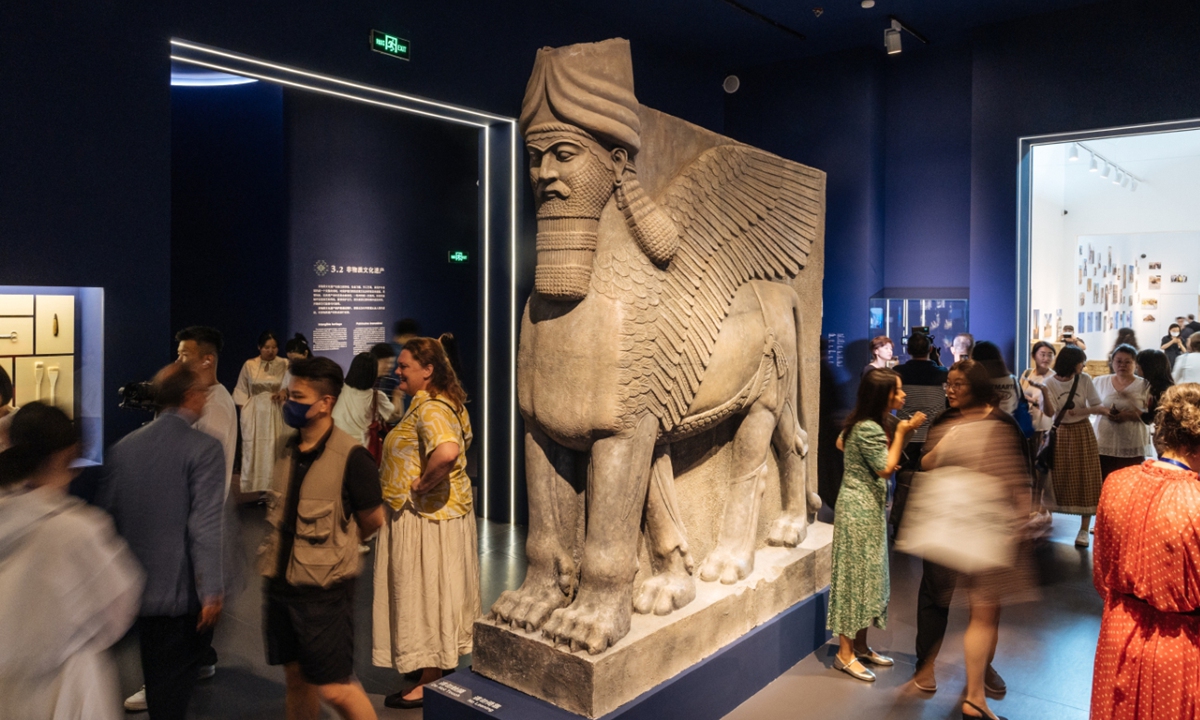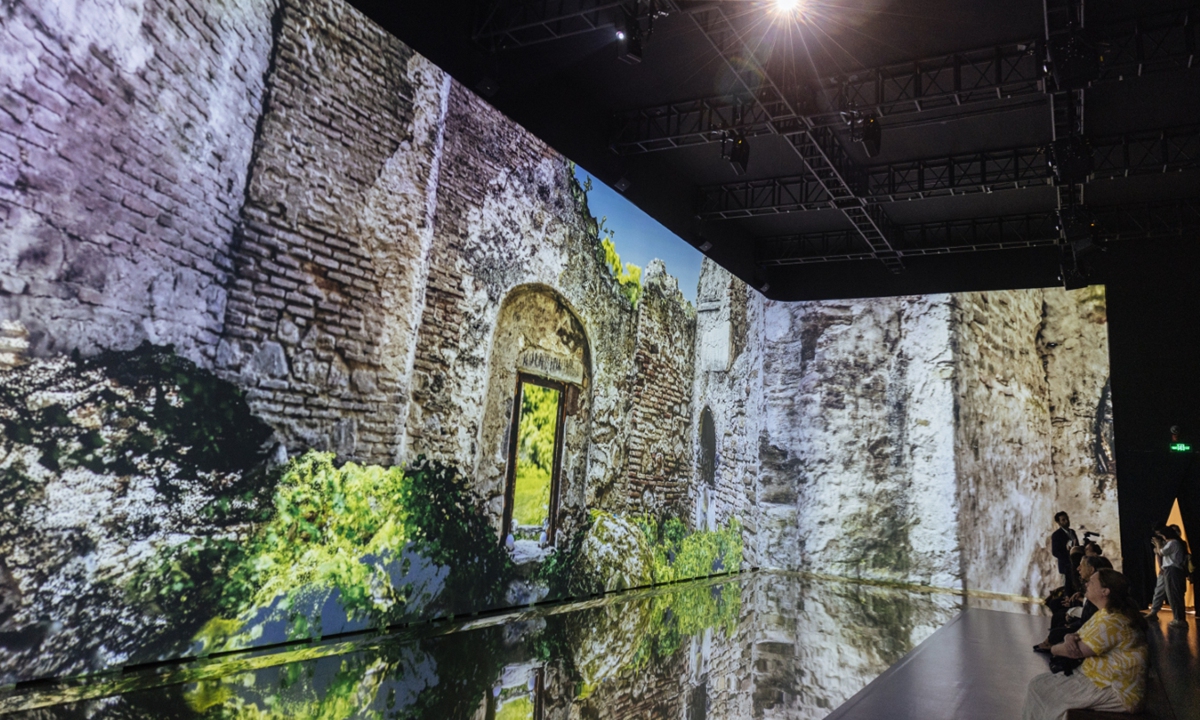
Visitors explore the Salvaged from the Shadows: Protecting Cultural Heritage exhibiton at the National Museum of China in Beijing on June 6, 2024. Photo: Li Hao/GT
Starting from June 6, the National Museum of China (NMC) is presenting, in partnership with the International Alliance for the Protection of Heritage in Conflict Areas (ALIPH), an exhibition titled Salvaged from the Shadows, Protecting Cultural Heritage, featuring ALIPH's work from around the world.
Experts told the Global Times that the exhibition bears witness to collective effort and to the tangible results that ALIPH has achieved in the last seven years.
At the opening ceremony of the exhibition held at the NMC in Beijing, Gao Zheng, director of the National Museum of China, said that "China, a country rich in cultural heritage, was among the first to respond to the initiative led by ALIPH. By playing an active role in this international organization as a founding member state, China has taken concrete action to safeguard humanity's cultural heritage."
As part of this initiative, the NMC has long been engaged in the work coordinated by ALIPH's Scientific Committee, sharing its own expertise in protecting heritage, Gao noted.
"The museum also serves as one of the world's three international safe havens that affords shelter to heritage in danger, with the other two being the Musée du Louvre Lens in France, and the Schweizerisches National Museum," Gao introduced.
China became one of ALIPH's founding member States in 2017. The exhibition area covers 1,000 square meters, offering, for the first time, a cross-section of the roughly 450 projects from 35 countries implemented by local and international partners supported by ALIPH.
Mission of hope
Cultural heritage is a story about humanity. Through methods exemplified across diverse project and considerable effort, communities that live near heritage sites or make a living from them can benefit from their proximity in number of ways. In exchange, these communities ensure their lasting protection.
In a section titled "The women and men behind cultural heritage," these communities' experience and dedication demonstrates the value and on the importance of ALIPH's mission.
Zhu Xiaoyun, director of international cooperation at the NMC and co-curator of the exhibition, said, "We can see these interviewees in the video clip shown in the exhibition are all ordinary people. They live at the site of [cultural] heritage, in other words, we can say that they are closely involved in heritage protection."
Executive Director of ALIPH Valery Freland told the Global Times, "When you work in a conflict area, sometimes it's very difficult to work because it's a very unstable region and you also have to face, sometimes, the weakness of the administration of the civil society. Sometimes it's quite difficult to find the right operator [who is] able to work in such a situation."
"But I must say, since the launch of ALIPH, we have developed a big network of partners that we're able to work mostly everywhere."
Thanks to international cooperation, ALIPH has supported about 450 projects in at least 35 countries, according to Freland.

A scene at the Salvaged from the Shadows: Protecting Cultural Heritage exhibiton at the National Museum of China in Beijing Photo: Li Hao/GT
Agile organization
Freland pointed out that ALIPH is a very agile organization. "After the blast in Beirut, [Lebanon] in 2020, we were able to act very quickly on the ground through our network of partners. We financed them to help them safeguard the houses to rehabilitate the museum," he said.
ALIPH spent $3.6 million to finance the stabilization of 40 history houses that were damaged by the blast. At the same time, ALIPH financed the Museum of Beirut, Sursock Museum, two cathedrals, one historical house that belongs to a Muslim Association, and two libraries.
"We can also finance long-term project like the rehabilitation of the Mosul Museum. We worked with different partners and the State Board of Antiquities and Heritage of Iraq. All these partners worked together for the rehabilitation of artifacts which were destroyed in war," Freland said.
For ALIPH, one of the main challenges and priorities, "is to work with local people and local communities, local authorities and local NGOs as much as possible. We need to have everyone on board if we want to protect cultural heritage for the long term," he noted.
In addressing China's contribution to the inter-cultural dialogue and peace-building, he said, "China played a key role in ALIPH. [The country has] been very active in our governance. We have a very strong partnership with China. We want more Chinese expertise within ALIPH and we want to develop the relationship between ALIPH and the Chinese operators, Chinese cultural institutions, and Chinese foundations."
Tech empowered
In the last section the exhibition, the three-wall huge projector screen showcases preserving the beauty of the world.
Bastien Varoutsikos, strategy director of ALIPH and co-curator of the exhibition, introduced that the ALIPH has funded many large-scale 3D data collections at important world heritage sites, which is a solid case story for applying new technology in heritage protection.
"Based on these 3D data, we have produced this projecting video to provide our audience with unique experience to see the preserved beauty of world cultural heritage," he said.



